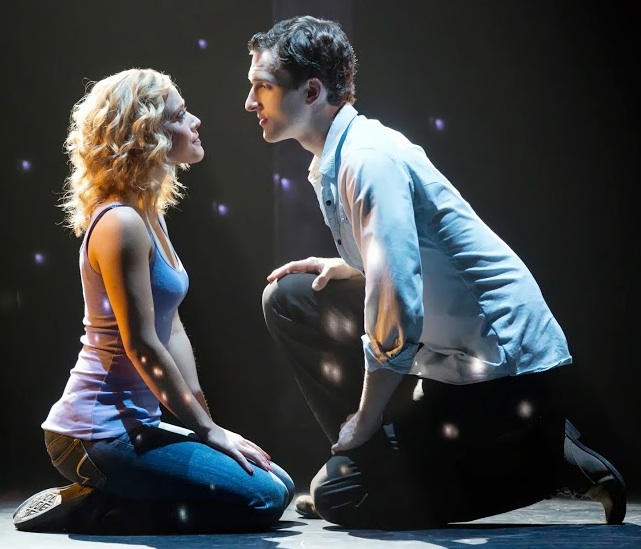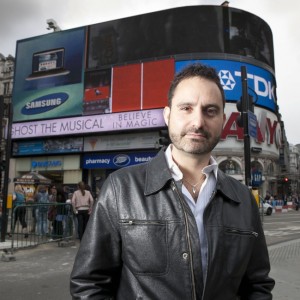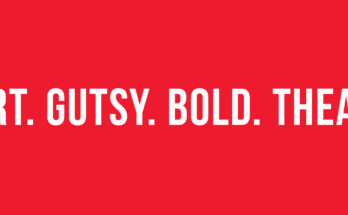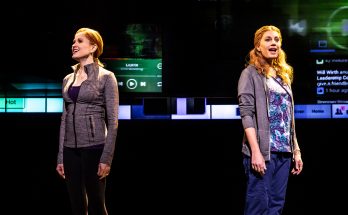“Ghost: The Musical” takes the Fox Theatre stage Nov. 5-10.
::
Musical theater is often about making sure you’re seen and heard. Project your voice to the back row and beyond. Make that gesture a little more sweeping. Perhaps drop a chandelier from the ceiling at some point.

Paul Kieve’s task is to hide almost all of what he does: the optical illusions that are some of the most talked-about moments in Ghost: The Musical. Audiences will see an actor walk through a door, objects levitate and hover in midair, and spirits rise from dead bodies. What they won’t see is the sleight of hand that makes it all possible.
“About 97 percent of what I do is never seen by the audience,” says Kieve, a Brit who’s in his mid 40s. “My job is about both revealing and concealment. The end result should be a story-telling moment of something that isn’t actually possible, like a letter that folds up on its own in someone’s hand.”
Ghost is, of course, the stage version of the popular 1990 supernatural romance about dead man Sam (Patrick Swayze) trying to connect from the afterlife with his girlfriend Molly (Demi Moore) through the medium Oda Mae (an Oscar-winning Whoopi Goldberg). Fans may remember something about pottery-making and the Righteous Brothers’ “Unchained Melody.”
Bruce Joel Rubin adapted his own Oscar-winning screenplay for the stage; the music is from Glen Ballard and the Eurythmics’ Dave Stewart. The show began in England in 2011, moved to Broadway in 2012 and is now on its first U.S. national tour.
Critics have singled out the musical’s illusions – essentially stage magic baked into the storyline, as have Kieve’s fellow magicians.
“It’s rare for me to experience wonder, but my friend Paul Kieve gave me that experience for an illusion he created in Ghost,” David Copperfield tweeted.
Added Teller (the small one) of magic team Penn and Teller: “A show with killer magic built in bone-deep. This is magic as it should be used in the theater, the heart of the experience.”

Kieve was involved with Ghost from its inception. “In the movie, they do everything with special effects and the audience knows that,” he says. “A lot of things have to be reimagined for the stage. We had to design the set itself to work with the illusions. We know there’s a guy who walks through a door, so you need to design everything in the environment to make that happen, and to make sure everyone in the audience sees it, but doesn’t see how it works.”
Kieve began doing magic when he was 10, when he saw Doug Henning on a TV special and got his first magic set. At age 16 he did magic in the music video for Sade’s “Your Love Is King.” He’s since become a magician, consultant, designer and expert on the history of magic. He consulted on the Harry Potter films Prisoner of Azkaban and Goblet of Fire, and taught magic to young actor Daniel Radcliffe.
His book Hocus Pocus: A Tale of Magnificent Magicians and Their Amazing Feats was published in 2007 in the United Kingdom, he’s consulted for Copperfield, created illusions for the high-concept Zorro that played Atlanta’s Alliance Theatre last spring, and sawed Simon Cowell in half on live television. (Should we thank him?)
It was his early exposure to Henning, the late Canadian magician with the memorable mustache, that guided Kieve in his endeavors.
“Doug Henning emphasized the importance of wonder for the audience, rather than a magician who makes the audience feel like they’ve been tricked,” Kieve says. “His whole persona was about sharing wonder and a feeling of astonishment. It’s a difficult balance to strike for magicians. When you stand up onstage as a magician, the audience is thinking, ‘This guy’s going to try and fool me.’ So you try to find ways around that.
“I’d rather let you have a sense of amazement.”
::
Phil Kloer has covered theater and the arts in Atlanta for 28 years, as a theater critic and popular culture writer for The Atlanta Journal-Constitution, and as a theater writer for ArtsATL.com.



